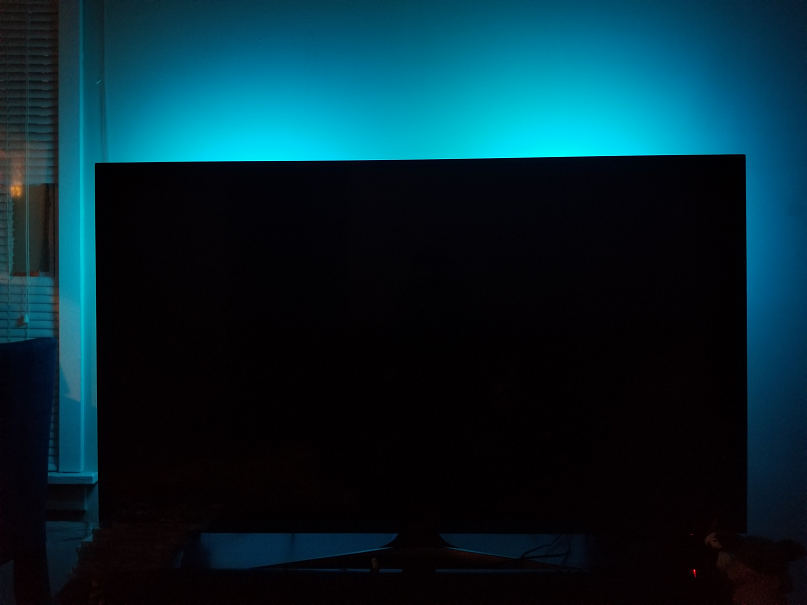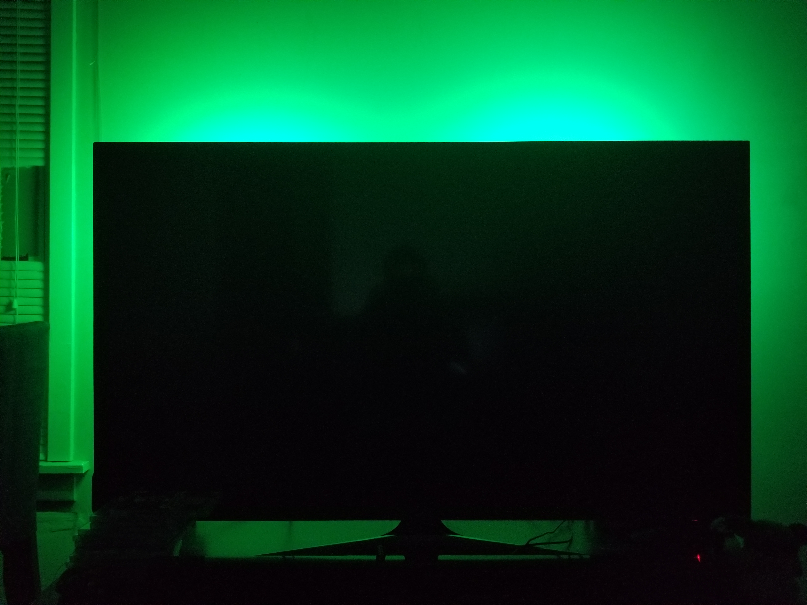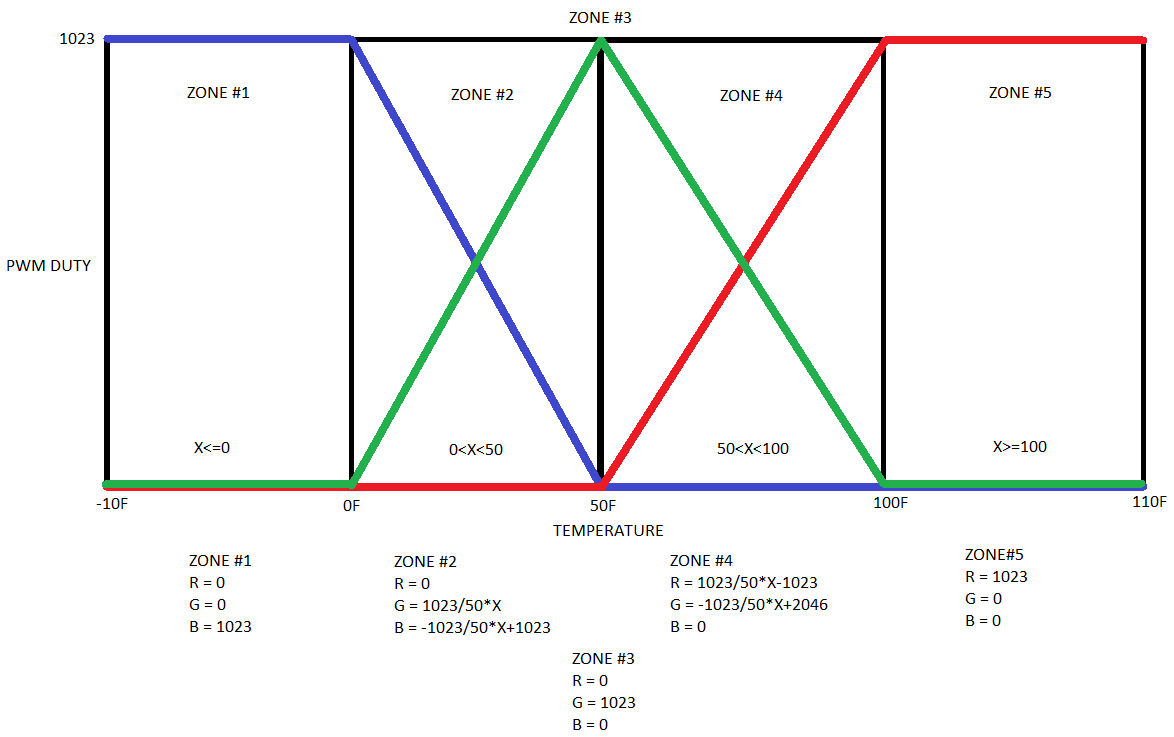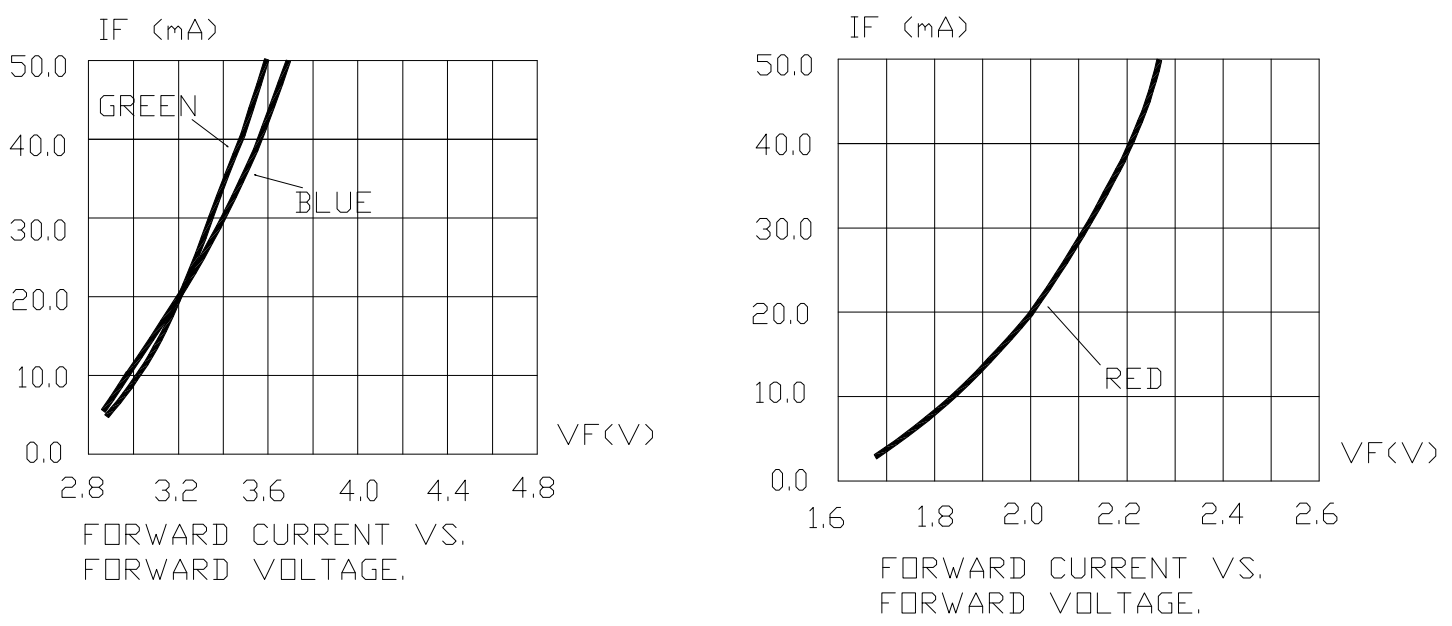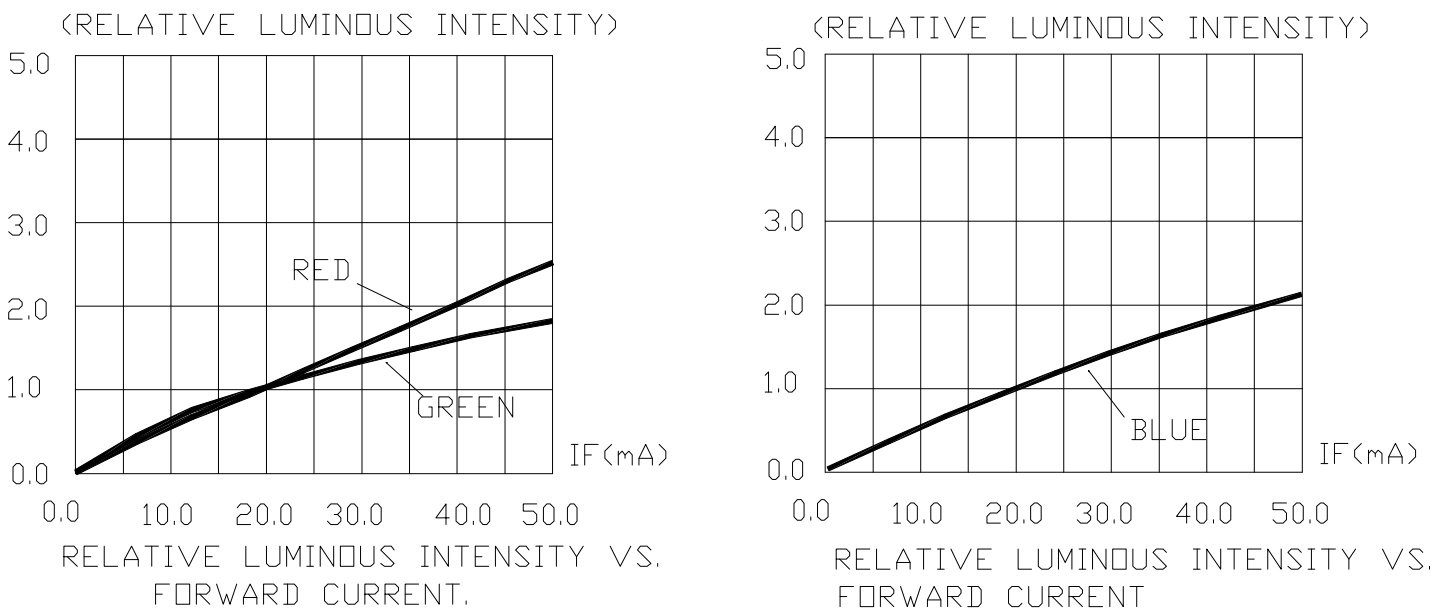-
Its Cold Outside... Oh wait now its warm?
01/09/2020 at 12:36 • 0 commentsWinter is in full effect, but we are having some interesting temperature fluctuations this week. This morning it was quite cold at 23F (-5C) outside. Below is the color of the temperature outside:
Later that night the temperature rose to a warmer 47F (8.3C). This is the color of the temperature outside:
This is a great example of how the Weather Color Strip can show you visually the temperature outside without having to look up the weather online. You can simply look at the color that is always there to gauge the temperature outside.
Hope you found this interesting.
-
RGB LED Color Balancing Experimentation
11/29/2019 at 02:07 • 3 commentsThe RGB LED's are a major piece to Weather Color Strip, and mixing of the RGB elements is also important in order to accurately show the color of the temperature outside. The colors are mixed by calculating duty cycles for Red, Green and Blue LED's based on the temperature information parsed from a weather API. The duty cycles are determined using this graphic I have made:
The problem I have noticed is the color spectrum can be green heavy, red heavy or blue heavy depending on the color balancing of the RGB elements. Ideally I would like to see an even spread of blue/green at lower temperature and red/green at higher temperatures. Currently I have tried four different strategies and would like to document the results:
- Equal Resistance
- Each LED (Red, Green and Blue) will have the same current limiting resistor value
- Equal Current
- Each LED (Red, Green and Blue) will have the same current
- Equal Intensity
- Each LED (Red, Green and Blue) will have a scaled max current so each LED will have an equal intensity
- 3:6:1 Color Mixing Ratio
- Create an overall target for intensity. 30% will be red, 60% will be green and 10% will be blue.
The LED's I used are Cree SLV6A-FKB-CK1P1G1BB7R3R3. Digikey page is below:
You will notice that the LED voltage drops in each formula are changing slightly. This is change is due to changes in LED current. This voltage drop is very important when calculating ideal LED resistor values. Relationship between LED current and voltage drop can be found in the following graphs:
Another important section of the datasheet are the Relative Luminous Intensity curves. These curves show the relationship between current and luminous intensity. These are important when trying to calculation the ideal LED currents:
Equal ResistanceFor this strategy I simply used a common resistor values for Red, Green and Blue LED's. I chose a simple 1k resistor.
Actual resistances, currents and intensities are summarized below:
RED GREEN BLUE RESISTOR VALUE (OHM) 1000 1000 1000 LED CURRENT (mA) 10.16 9.000 9.050 INTENSITY (mcd) 355.6 960.000 181.000
Equal CurrentFor this strategy I tried to make the LED current for Red, Green and Blue to be 10mA. Below is some math on how I calculated the LED resistor values:
RED GREEN BLUE RESISTOR VALUE (OHM) 1000 887 887 LED CURRENT (mA) 10.16 10.124 10.169 INTENSITY (mcd) 355.6 1079.895 203.382
Equal Intensity
For this strategy I tried to scale each LED current in order to have the same intensity for each LED (Red, Green and Blue). I was trying to achieve a target intensity of 400mcd. Using the Relative Luminous Intensity curves, I figured out how much current each LED would need in order to achieve 400mcd. Below is some tables/math on how I calculated the LED resistors values:
RED GREEN BLUE 20mA INTENSITY (mcd) 700 1600 400 RELATIVE INTENSITY (@ 400mcd) 0.571 0.250 1.000 REQUIRED LED CURRENT (mA) 11.429 5 20 I have calculated the necessary current values to achieve 400mcd of intensity. Now I can perform similar calculations completed in the equal current strategy to calculate resistor values:
Actual resistances, currents and intensities are summarized below:
RED GREEN BLUE RESISTOR VALUE (OHM) 887 2430 442 LED CURRENT (mA) 11.342 3.745 19.910 INTENSITY (mcd) 396.956 399.451 398.190
3:6:1 Color Mixing RatioThis strategy involves having specific intensity ratios for red, green and blue LED's. The ratio is 30% red, 60% green and 10% blue. I do not have a ton of information where this ratio came from, I simply found it by doing searches on the topic of color balancing with RGB LED's. My overall intensity target for the RGB LED is 1500mcd. I have calculated the necessary intensities for each LED (red, green and blue) and used the Relative Luminous Intensity curves from before to calculate the required LED current for those specific intensities. Below are the results:
RED GREEN BLUE 3:6:1 MIXING RATIO 30% 60% 10% 3:6:1 MIXING RATIO INTENSITY (mcd) 450 900 150 20mA INTENSITY (mcd) 700 1600 400 RELATIVE INTENSITY (@ 400mcd) 0.643 0.563 0.375 REQUIRED LED CURRENT (mA) 12.857 8.438 7.5 I have calculated the necessary current values to achieve these specific intensities. Now I can perform similar calculations completed in the equal current strategy to calculate resistor values:
Actual resistances, currents and intensities are summarized below:
RED GREEN BLUE RESISTOR VALUE (OHM) 787 1070 1210 LED CURRENT (mA) 12.859 8.421 7.554 INTENSITY (mcd) 450.064 898.193 151.074
TestingI built 4 different sets of RGB LED strips with each strategy. Taking pictures of each condition will allow us to compare the color profile of all 4 strategies side by side. Below are all RGB responses from 0F to 100F at 10F increments:
0F (Red Duty = 0%, Green Duty = 0% & Blue Duty = 100%)
EQUAL RESISTANCE EQUAL CURRENT EQUAL INTENSITY 3:6:1 COLOR MIXING ![]()
10F (Red Duty = 0%, Green Duty = 20% & Blue Duty = 80%)
EQUAL RESISTANCE EQUAL CURRENT EQUAL INTENSITY 3:6:1 COLOR MIXING ![]()
20F (Red Duty = 0%, Green Duty = 40% & Blue Duty = 60%)
EQUAL RESISTANCE EQUAL CURRENT EQUAL INTENSITY 3:6:1 COLOR MIXING ![]()
30F (Red Duty = 0%, Green Duty = 60% & Blue Duty = 40%)
EQUAL RESISTANCE EQUAL CURRENT EQUAL INTENSITY 3:6:1 COLOR MIXING ![]()
40F (Red Duty = 0%, Green Duty = 80% & Blue Duty = 20%)
EQUAL RESISTANCE EQUAL CURRENT EQUAL INTENSITY 3:6:1 COLOR MIXING ![]()
50F (Red Duty = 0%, Green Duty = 100% & Blue Duty = 0%
EQUAL RESISTANCE EQUAL CURRENT EQUAL INTENSITY 3:6:1 COLOR MIXING ![]()
60F (Red Duty = 20%, Green Duty = 80% & Blue Duty = 0%)
EQUAL RESISTANCE EQUAL CURRENT EQUAL INTENSITY 3:6:1 COLOR MIXING ![]()
70F (Red Duty = 40%, Green Duty = 60% & Blue Duty = 0%)
EQUAL RESISTANCE EQUAL CURRENT EQUAL INTENSITY 3:6:1 COLOR MIXING ![]()
80F (Red Duty = 60%, Green Duty = 40% & Blue Duty = 0%)
EQUAL RESISTANCE EQUAL CURRENT EQUAL INTENSITY 3:6:1 COLOR MIXING ![]()
90F (Red Duty = 80%, Green Duty = 20% & Blue Duty = 0%)
EQUAL RESISTANCE EQUAL CURRENT EQUAL INTENSITY 3:6:1 COLOR MIXING ![]()
100F (Red Duty = 100%, Green Duty = 0% & Blue Duty = 0%)
EQUAL RESISTANCE EQUAL CURRENT EQUAL INTENSITY 3:6:1 COLOR MIXING ![]()
All On (White) (Red Duty = 100%, Green Duty = 100% & Blue Duty = 100%)
EQUAL RESISTANCE EQUAL CURRENT EQUAL INTENSITY 3:6:1 COLOR MIXING ![]()
Conclusion
All 4 strategies had noticeable RGB mixing result differences. Some I like more than others, but I feel like there is a combination of all that may work out best. Below is a breakdown of my assessment for each strategy:
- Equal Resistance
- The simplest of the strategies design wise, and had excellent results. I love the spread of colors on the low range of temperature (Blue/Green), but I feel the high end of temperatures (Red/Green) are a bit Green heavy.
- I think maybe adjust the green and blue currents down equally may maintain the lower temperature response that I like, while reducing the green effect at higher temperatures.
- Equal Current
- Very similar to equal resistance. I feel like this strategy is even more green heavy at higher temperatures (Green/Red)
- Equal Intensity
- This strategy seems extremely Blue heavy at lower temperatures (Blue/Green). This is even more apparent during the all on white test.
- I really like the higher temperature (Red/Green) spread.
- 3:6:1 Color Mixing
- Overall i think this might have the best response. I feel like the higher temperatures (Red/Green) are a bit more "bright".
Long story short, I dont really know which is best, but I thought the best way to learn would be to experiment with a few different strategies.
Please let me know your thoughts, or if you have some knowledge on the best way to approach RGB mixing ratios. I am sure this is slightly different for every RGB LED, but it seems to be a great area to learn more.
Hope you enjoyed. Thanks.
- Equal Resistance
-
Weather Color Strip LED Strip Proto 2 Release
11/23/2019 at 14:49 • 0 commentsUploaded Weather Color Strip LED Strip Proto 2 files and updated all relevant material to reflect this latest revision.
-
Weather Color Strip Module Proto 5 Release
11/23/2019 at 14:32 • 0 commentsUploaded Weather Color Strip Module PROTO_5 files and updated all relevant material to reflect this latest revision.
Weather Color Strip
Parses local weather data and drives RGB LED strips to the color of the temperature outside
 schwarzrmsu
schwarzrmsu